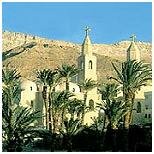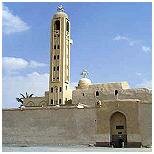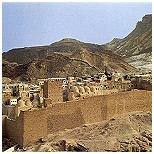|
|
|||||||||||||||||||||||||
|
|
Pages in this section: coptic egypt | coptic cairo | coptic monasteries The land of Egypt is truly a historical delight, but it's not just the ancient Egyptians who left their mark for all to see, so too did the Copts, the early Christians from just after the time of Christ.
A brief introduction to Coptic Egypt The term Copt or Coptic is a corruption of the Greek word "Aegyptios" (or Aigyptos) meaning Egyptian. Aigyptos derived from the Ancient Egyptian "Ha-ka-Ptah" meaning "the house of the Ptah". Through its use in Arabic, "qubt" or "qibt", it became known as "Copt". The modern use of the term "Coptic" refers to both the Egyptian Christians themselves, and the final stage of the language of the Ancient Egyptians. It also describes the art and architecture that developed as an early expression of this "new" faith.
A small community of Christians developed in Alexandria in the late first century, and became more numerous by the end of the second century. The Egyptians embraced the new faith, and Christianity quickly spread throughout Egypt within half a century of St Mark's arrival in Alexandria. Some similarities in beliefs helped Christianity to be accepted by Egyptians, including the beliefs that the Egyptian god Osiris was both human and god, the resurrection of Osiris, and the godly triad of Osiris, Isis, and Horus. There are many sites throughout Egypt at which the holy family are said to have taken shelter and sought refuge during the three years that they spent in Egypt after fleeing from Judea and King Herod. Many ancient churches have been built upon these sites.
The persecution of the Christians It was around the third-fourth centuries AD, that the Romans had taken to persecuting the followers of various other religious beliefs, Christians in particular. The Roman emperor Diocletian, attempting to restructure and unify the Roman Empire, introduced new harsh reforms which led to a rebellion in Egypt. This in turn led to further extensive persecutions of Christians, many of whom were martyred for their beliefs. This period is now referred to by Copts as the "Era of Martyrs", and the year of Diocletian's accession (284 AD) was designated Year One in the Coptic Christian calendar in order to observe the tragedies. The beginning of monasticism The emperor Constantine ended the persecutions of Christians in 313 AD with the Edict of Milan, which declared general religious tolerance throughout the Roman Empire. Later, Constantine established Christianity as the state religion of the eastern Roman Empire, and it was around that time that the tradition of monasticism began in Egypt, with "holy men" retreating into caves in the desert to live like hermits. Followers of these hermits established monasteries in inaccessible and isolated areas, and many of these original monasteries still survive today, some still complete with monks, icons, furnishings and the trappings of the simple lifestyle that date back almost to the time of Christ. |
||||||||||||||||||||||||

|
|||||||||||||||||||||||||
|
|||||||||||||||||||||||||




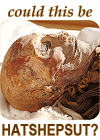
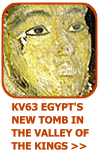

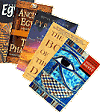
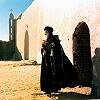
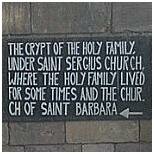 The Coptic Church is based upon the teachings of St Mark, who brought Christianity to Egypt in around 50 AD. St Mark was one of the four gospels (Matthew, Mark, Luke and John) and the gospel of St Mark is the oldest canonical gospel.
The Coptic Church is based upon the teachings of St Mark, who brought Christianity to Egypt in around 50 AD. St Mark was one of the four gospels (Matthew, Mark, Luke and John) and the gospel of St Mark is the oldest canonical gospel. 